
Cough in the baby is a symptom that can indicate a variety of diseases. If cough occurs along with a rise in temperature, a runny nose, then these are obvious signs of a cold. But when a cough is not accompanied by an increase in the temperature regime, then the situation is more complicated, because it is sometimes difficult to understand the cause of such a symptom. However, treatment should be performed immediately after the symptoms are detected.
content
- 1 Causes and treatment of cough
- 1.1 Barking
- 1.2 Dry
- 1.3 Wet
- 1.4 Treatment
- 2 Causes and treatment of rhinitis
- 3 Causes and treatment of bronchitis
- 4 Opinion Kamarouski
Causes and treatment of cough
Cough can be of three types without temperature:dry, wet and barking. Each of them has its own symptoms and risk factors.
Barking
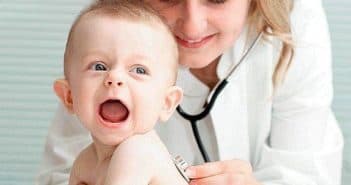
In babies musculature is not yet fully formed. For this reason, very often they suffer a so-called "barking" cough.
He is so called for the reason that it is very similar to barking a dog. The symptom can be rough and accompanied by wheezing, whistling. If a cough occurs very often, then the baby is simply exhausted.The result of the pathological process is the formation of a strong hoarseness, during which the baby can even lose his voice.
The main reasons for the formation of barking cough are:
- diphtheria or whooping cough;
- laryngitis, pharyngitis;
- bronchial asthma;
- too dry air in the room;
- presence of a foreign object in the throat;
- cyst in the larynx;
- allergy;
- infectious ailments.
Dry

This symptom is characterized by a lack of abundant sputum discharge. Cough can take a strong, disruptive nature, accompanied by painful sensations. The formation of an unproductive cough without temperature can be affected by catarrhal disease or defeat of ENT organs by infections.
At the initial stage of the common cold, a baby has a sore throat and an unproductive cough. After a few days, the intensity of symptoms decreases, the cough turns into a wet form, as the body begins to reproduce phlegm.
But then the cough again turns into an unproductive form, because slime is released in less quantity. The most common causes of dry cough include:
- influenza virus;
- smoke from cigarettes, overdried air in the room;
- sharp chemical smells.
So do not ignore the fact that a dry cough that affects the baby many times throughout the day is a clear sign of laryngitis, an infectious disease, whooping cough, and measles. It describes the treatment of dry cough in a baby without temperature.
Wet

If a small child is able to cough up phlegm, then the cough is called productive. This name he received for the reason that there is a clearing of the bronchi from the secret. The cause of the formation of this cough is the presence of acute respiratory disease, common cold, allergies, pneumonia and bronchitis. If sputum is secreted by a viscous consistency, it is important to take care of its early evacuation. Otherwise, it will multiply pathogenic microorganisms. This phenomenon causes serious complications.
With a wet cough, the secret that separates can take a hazy shade, which indicates the onset of the formation of the inflammatory process. With a rusty shade of mucus, you can recognize allergies, and green indicates sinusitis, tuberculosis.
Intensive release of mucus can confirm the development of bronchitis and tracheitis. If a productive cough is detected in the baby during the treatment period, then this is a good indicator that the patient is recovering. The spitting out of such small children is difficult because the viscosity is too high, and the musculature is not yet so developed.
Treatment of
Medication therapy involves the use of mucolytic drugs that exert an expectorant and diluting effect. When receiving synthetic expectorant drugs, high productivity and quick excretion of viscous mucus are achieved. 
Excellent antitussive drugs are herbal medicines, but before taking them you need to make sure that the baby is not allergic. During the therapy, it is necessary to fill the room with fresh air. During the ventilation the baby should not be in the room.
Provide abundant drink to the baby by preparing tea, mors, broth and mineral water. Also, a positive effect can be obtained with the use of warm milk, radish juice.
Since different factors influence the formation of a cough, the drugs aimed at its elimination also have their own .Their selection should be carried out by a pediatrician after a thorough examination of the patient. Treatment will give a positive result only if the parents strictly follow all the recommendations. Only safe and appropriate therapy will lead to a successful outcome. Sometimes there is a cough in the baby with teething.
Causes and treatment of the common cold
In infants less than a year, infrequent cough without fever is considered a normal symptom. Thus, they cleanse the airways of dust and mucus, trapped in the trachea and bronchi. Typically, it is a cough in the baby in the morning or after eating. But sometimes parents notice from their children such a symptom as a runny nose or snot without temperature. He appears very often after walking on the streets in the cold season. The reason is the temperature difference. It also passes suddenly, as it did. But there are situations when the runny nose causes a certain ailment.
In video, a baby cough and runny nose without fever:
Very often a runny nose without temperature in small children is the result of a cold that has occurred when the respiratory system is infected with viruses. The immunity of the child comes into conflict with it and actively removes them. This explains the absence of temperature.
The next cause of cold without temperature is an allergic reaction. The symptomatology of allergic rhinitis is very similar to the manifestations of the common cold, but it has more definite differences:
- is an unproductive cough;
- swelling of the nasal mucosa, discharge from the nasal cavity;
- increased lacrimation;
- skin blush, and they form a rash.
Regardless of what triggered a common cold - a cold or an allergy - treatment should necessarily involve moistening the air in the room. Often ventilate the room in which the crumb is located, or use a special humidifier for these purposes. Also, the water in the bowls struggles with dry air, which must be placed all over the room. 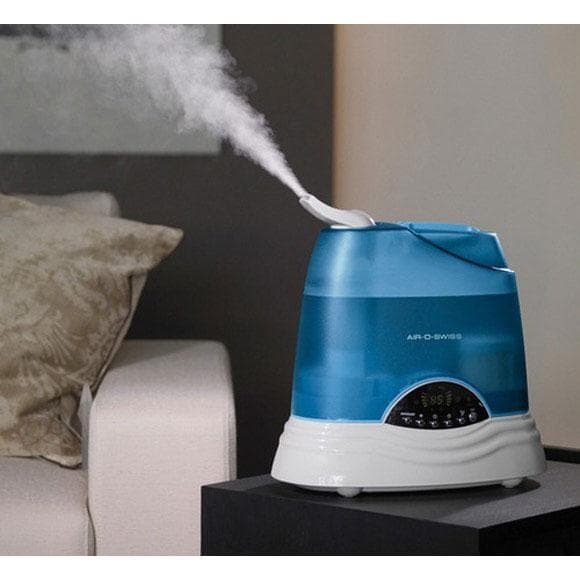
It is compulsory to give your child as much drink as possible. It is the liquid that facilitates the rapid evacuation of toxins, the dilution of viscous mucus in the nose and rapid cleansing. For these purposes, you can use ordinary water or special children's teas. Well-proven decoction of chamomile.
The nasal cavity should be washed as often as possible with a solution based on sea water or table salt. The glass of warm water has a small spoon of salt. To get the maximum effect, it is worth adding a few drops of iodine.
To clean the nose, pharmacies can be used. Here are in great demand:
- Aqualor,
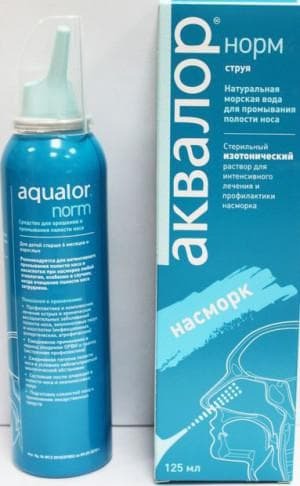
- Aquamaris( here you can read reviews about nasal drops for children Aqua Maris),
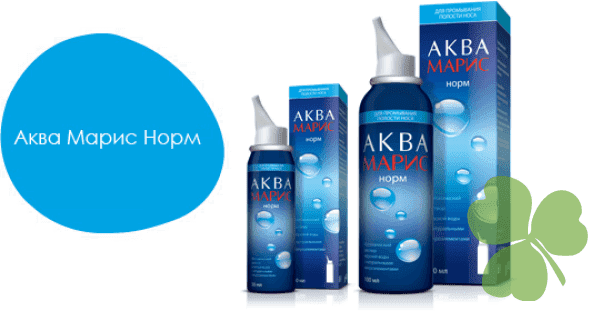
- Salin.
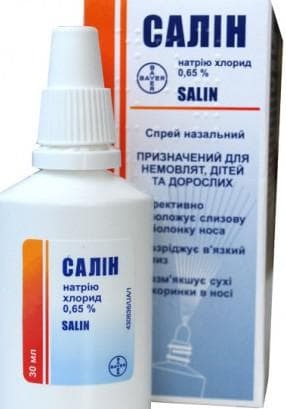
Thanks to them, it is possible to moisten the nasal mucosa and the internal cavity of the nasopharynx. Presented drugs have antiseptic and bactericidal effect.
To combat nasal congestion, parents can use vasoconstrictive drops.
- Nazol Baby,
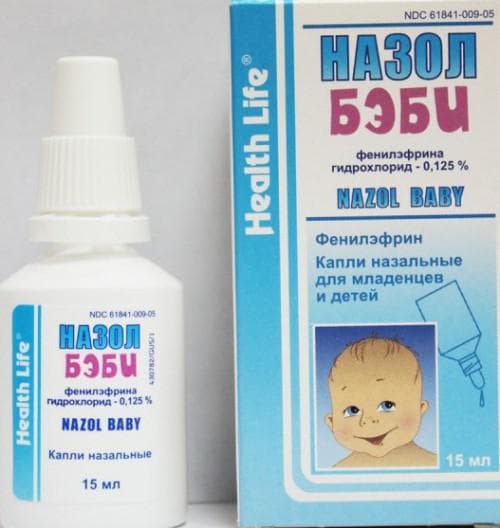
- Nazivin for newborns can help.
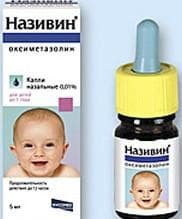
If during the day the baby's nose is not heavily clogged, then it is necessary to drip with vasoconstrictive drugs only for the night. You can apply these medicines for no more than 7 days.
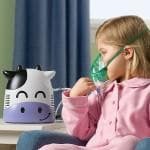
Read how to treat a common cold with a nebulizer in children.
This describes the treatment of a wheezing cough in a child.
Reviews on the use of the inhaler for cough and cold: http: //prolor.ru/g/lechenie/ ingalyator-ot-kashlya-nasmorka.html.
Causes and treatment of bronchitis
To provoke bronchial inflammation can be affected by their viruses and bacteria. The most frequent pathogens may occur:
- influenza virus;
- adenovirus infection;
- paragripp;
- is a rhinovirus infection;
- chlamydia and mycoplasma;
- pneumococci, staphylococci and streptococci.
All these microorganisms can infect the baby with airborne droplets from carriers of infection. Vectors can be people who are sick for this disease and are next to the baby.
With this disease without temperature it is important to provide the baby with the right care, diet and nutrition. Regardless of the form of bronchitis, it is important that the patient consumes dairy products, as well as products of plant origin. Give the baby a different drink. Watch the humidity in the room, often ventilate the room.
On the video - tells about the treatment of bronchitis in a newborn without temperature:
Make sure that the baby breathes through the nose. To facilitate breathing it is necessary to wash the nose with a solution based on sea salt and apply vasoconstrictive drops. The most effective are Tizin, Galazoline, and Pharmazoline. If the child has an allergy, then it is worthwhile to use antiallergic drops in the therapeutic process. But it's not worth using for a long time, otherwise there will be a malfunction of the nasal mucosa.
When treating a cough, the doctor can prescribe antitussive medications - Sinecod. But it is advisable to use them in a debilitating cough. When the baby leaves mucus, then it must be used expectorant drugs - Althea, Licorice, Thermopsis. To eliminate the viscosity of sputum, mucolytics can be used - Ambroxol, Chymotrypsin, Bromhexine. It is best to use these medications by inhalation. When a cough is accompanied by a spasm of the bronchial tubes, the boy needs to use bronchodilators - Atrovent, Erespal.
Komarovsky's opinion
Komarovsky strongly recommends that all parents immediately consult a doctor after the appearance of such symptoms as cough and runny nose without fever. Sometimes such signs can hide a dangerous disease. At home, the baby needs to wash the nose, give as much drink, moisten the air. Such, at first glance, simple measures, will quickly relieve the patient's condition and eliminate unpleasant manifestations.
On the video - about a wet cough in a baby without temperature, says Komarovsky:
Runny nose and a cough without temperature in infants can occur for a variety of reasons. The success of treatment will depend directly on how accurately the cause of the pathology was determined. Parents should simply follow all the recommendations and surround their child with care and attention. Here you can read about the treatment of mucus in the nasopharynx of the baby.
